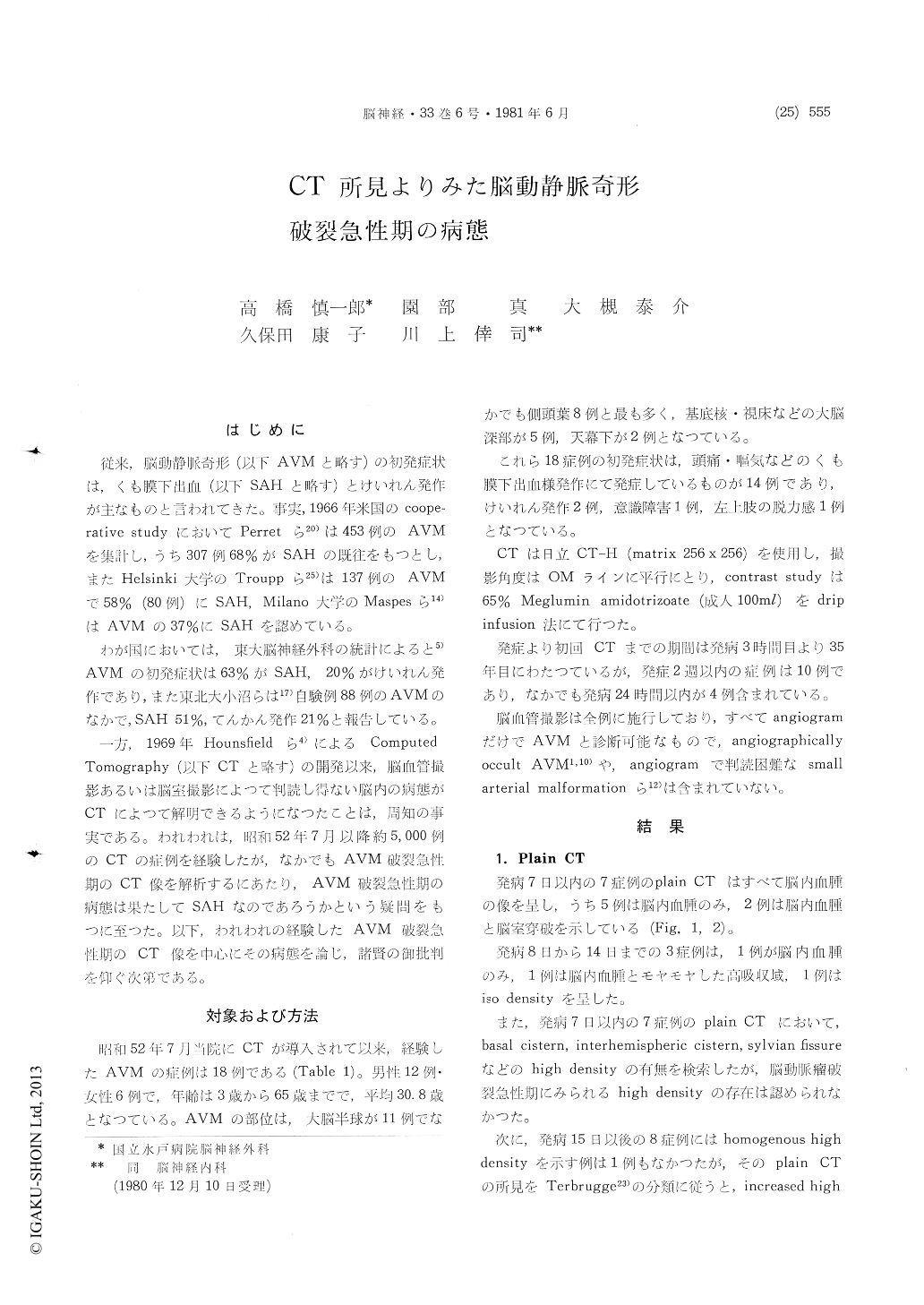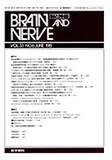Japanese
English
- 有料閲覧
- Abstract 文献概要
- 1ページ目 Look Inside
はじめに
従来,脳動静脈奇形(以下AVMと略す)の初発症状は,くも膜下出血(以下SAHと略す)とけいれん発作が主なものと言われてきた。事実,1966年米国のcoope—rative studyにおいてPerretら20)は453例のAVMを集計し,うち307例68%がSAHの既往をもつとし,またHelsinki大学のTroupPら25)は137例のAVMで58%(80例)にSAH,Milano大学のMaspesら14)はAVMの37%にSAHを認めている。
わが国においては,東大脳神経外科の統計によると5)AVMの初発症状は63%がSAH,20%がけいれん発作であり,また東北大小沼らは17)自験例88例のAVMのなかで,SAH51%,てんかん発作21%と報告している。
Eighteen patients with angiographically proved intracranial arteriovenous malformation (AVM) were studied by computed tomography (CT) and their clinical features were reviewed at the same time. The pathophysiology of ruptured AVM in the acute stage was discussed.
Seven of the 18 patients were performed CT scan within 7 days after the onset. Although all but one of the patients showed symptoms and signs suggestive of subarachnoid hemorrhage (SAH), intracerebral hematoma was demonstrated in all cases and two of them were accompanied by ven-tricular rupture. On the more, no high density lesion was demonstrated in cerebral cisterns by plain CT scan as seen in the acute stage of ruptured cerebral aneurysms.
Six patients were performed contrast study within 7 days after the onset and showed no en-hancement effect. On the contrary, nine of 10 patients performed contrast study more than 8 days after the onset showed enhancement effect.
It has been commonly postulated that subara-chnoid hemorrhage is the main pathophysiology of ruptured AVM. However, our study on CT scan of ruptured AVM demonstrated that intra-cerebral hematoma or ventricular hemorrhage is the chief underlying pathophysiology of ruptured AVM in the acute stage.

Copyright © 1981, Igaku-Shoin Ltd. All rights reserved.


